The lives of Edward and Mrs Simpson are legendary, but what about the third person in the Abdication Crisis – Ernest Simpson?
Written off as the boring husband who willingly gave up his wife for his king, Mr Simpson has too often been dismissed as a dull dog.
But in fact, Wallis Simpson‘s husband was a very attractive man, who married four times and was involved with a series of worldly-wise women. Rather than just acquiescing while his monarch stole his wife, he was enjoying his own grand passion with Wallis’s best friend.
Ernest Simpson was certainly a catch. The son of a wealthy British ship-broker and an American mother, he was good-looking, well-connected and chivalrous.
His elder sister Maud married a British politician, Peter Kerr-Smiley, and the couple entertained in style in Belgrave Square, in a house crammed with old masters. They hosted lavish parties where the Prince of Wales rubbed shoulders with celebrities and politicians.
A protective older sister, Maud was determined to make sure her handsome brother married well.
Noted as a ‘fastidious dresser’ with a ‘neat blond moustache’ by the New York Times, Ernest’s good looks made him a magnet for women. A young Barbara Cartland, the future doyenne of romantic fiction, was one of his early conquests. She often danced with the dark-haired, well-built young man.
On one occasion Ernest tried to kiss her in the back of a taxi. However, the canny flapper realised it was just a flirtation, writing to her mother, ‘He said some very flattering things but I don’t think he is seriously interested in me. Especially as his sister keeps saying to all the girls: “It’s no use your falling in love with Ernest, he’s got to marry money!”‘
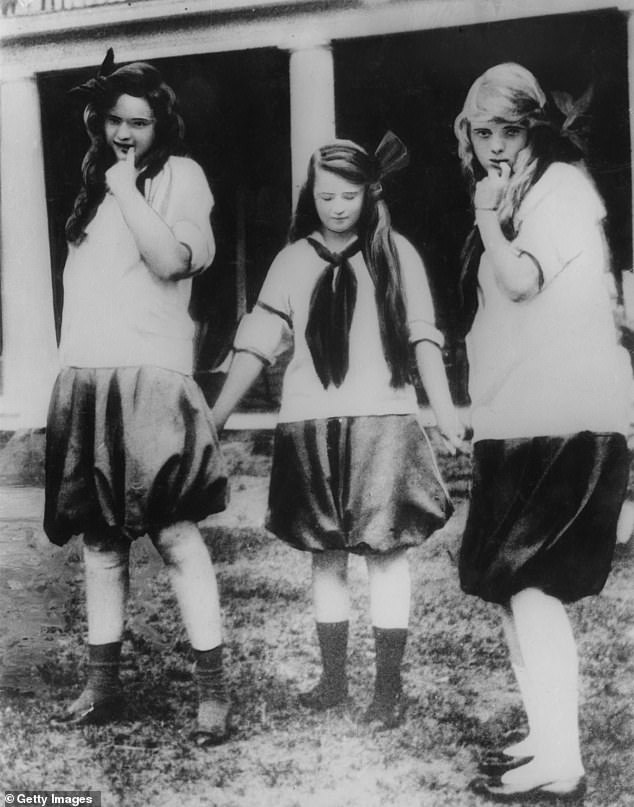
Bessie Wallis Warfield, the future Duchess of Windsor (left) with her childhood friend, Mary Kirk later Mrs Jacques Raffray who went on to marry the Duchess’s ex-husband, Ernest Simpson
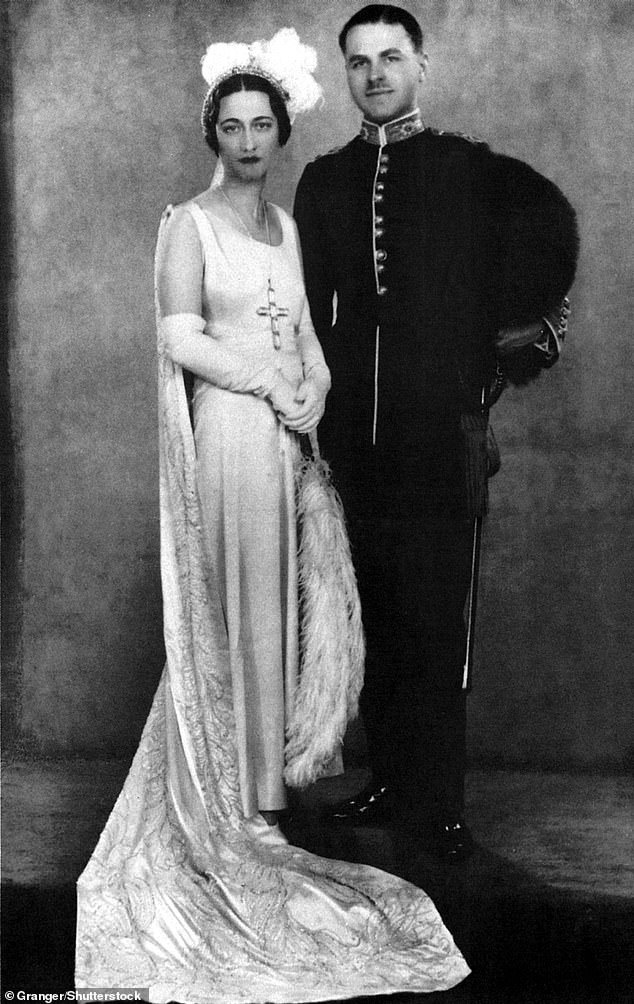
Bessie Wallis Warfield. Wedding Portrait With Her Second Husband, Ernest Simpson in 1928
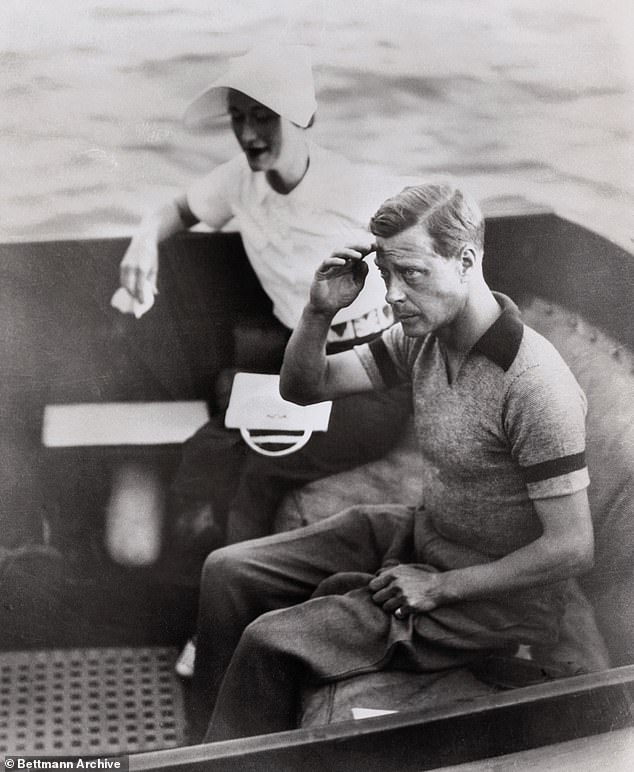
As the relationship between his wife Wallis and Prince Edward escalated, Ernest resigned himself to the inevitable
Mr Simpson was never on the marriage market for long. His first marriage to Dorothea Webb Parsons, a New Englander with whom he had a daughter, ended when Wallis Warfield appeared on the scene.
When they met in 1926, the attraction was instant. Wallis later recalled his ‘quiet wit’ and that he was ‘always well-dressed, a good dancer, fond of the theatre, and obviously well-read’. She added that he was ‘an unusually well-balanced man’. Wallis and Ernest married in 1928.
Although Mr Simpson is now purely seen as a stepping stone to greater things for his ambitious second wife, in fact, the couple were very compatible. Wallis had found the security which had previously eluded her. Ernest brought out the best in her and there is little hint of the dominating side of her character that emerged in her marriage to the Duke of Windsor.
Yet Wallis’s restless spirit could never be content for long and when the possibility of catching a king arose, there was no way she could resist.
At first Ernest encouraged the flirtation, not seeing the boyish immature royal as a threat. Wallis also did not take it too seriously, telling her Aunt Bessie that if her husband raised any objections, she would give the prince up at once. However, as the relationship between his wife and Edward escalated, Ernest resigned himself to the inevitable.
He did not cause a scandal because he still loved Wallis. In October 1936, he wrote to her: ‘I know that somewhere in your heart there is a small flame burning for me. Guard it carefully my darling, and don’t let it go out – if only in memory of all the sacred lovely things that have been.’
Rather than mope, Ernest moved on and fell in love himself – with someone too close to home for Wallis’s liking.
Mary Kirk Raffray had been Wallis’ best friend since school and had even been her bridesmaid at her first wedding. When Mary’s marriage broke up, Wallis invited her to stay with the Simpsons in their London flat.
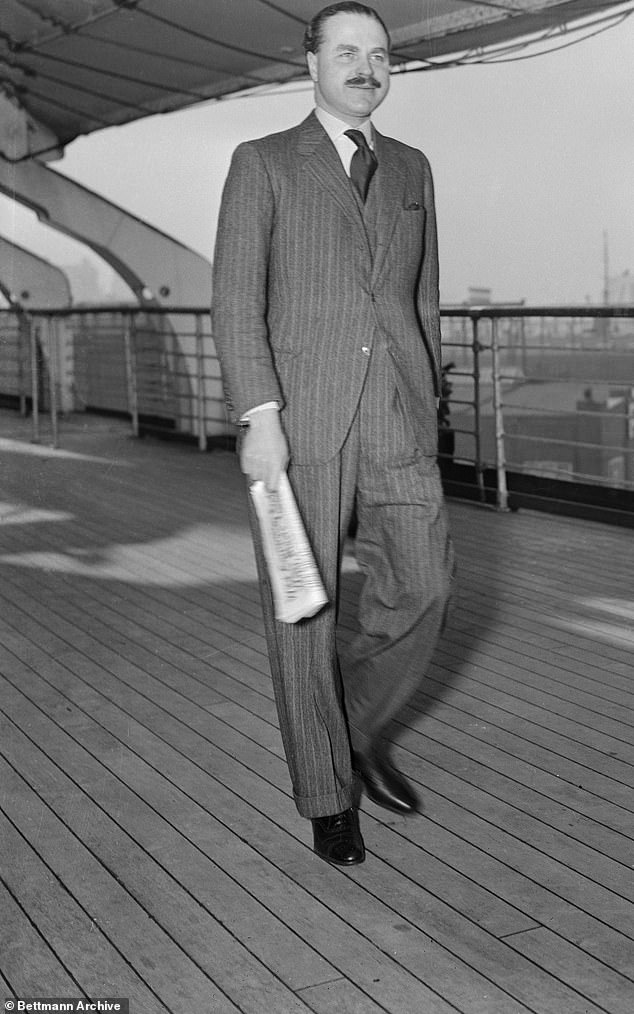
Rather than mope, Ernest moved on and fell in love himself – with someone too close to home for Wallis’s liking
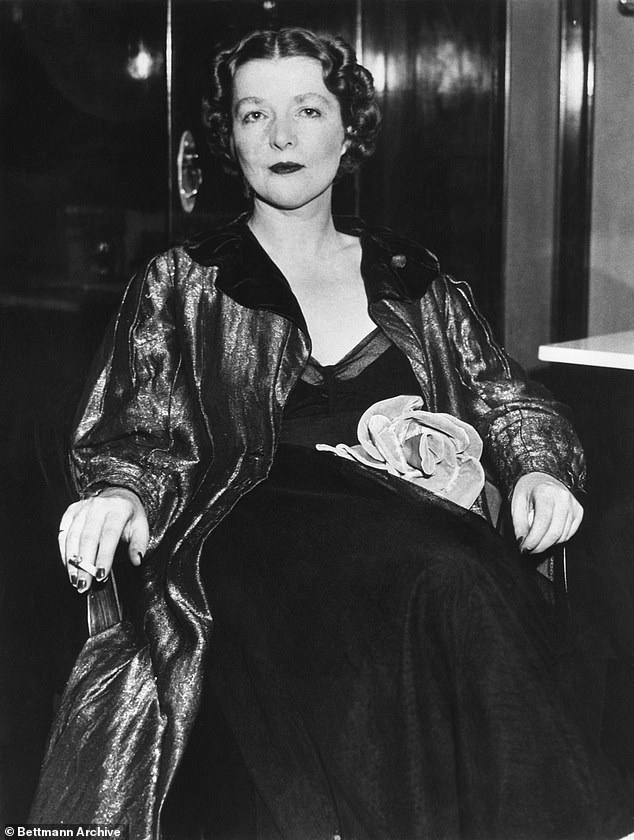
Mrs. Jacques Raffray, who became the next Mrs. Ernest Simpson, was met by him at the boat on arrival in England.
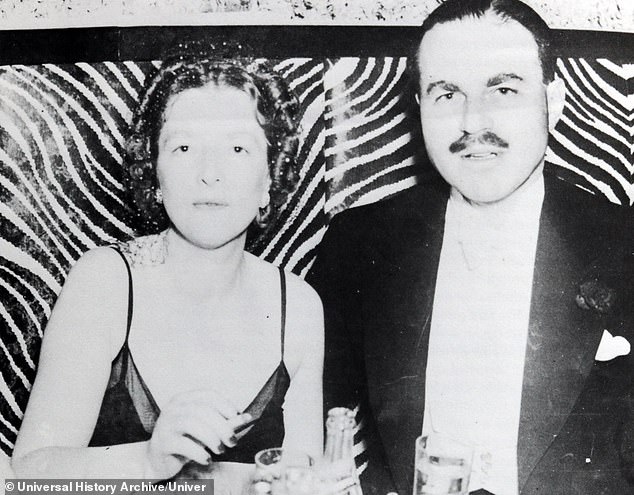
Wallis Simpson’s second husband, photographed after his secret wedding in 1937 to the former Mrs Jacques Raffray, Mary Kirk who had been Wallis Simpson’s best friend
At first, she encouraged her friend to distract her husband so that she was free to be with Edward. What she had not calculated on was that Ernest and Mary would develop a lasting rapport. After Mary returned to America, Ernest met up with her on a business trip and their affair began.
When Wallis discovered what had happened, she was not pleased. It closed a door that she had expected to stay open. Her husband’s change of allegiance pushed her further into the arms of the king and meant there was no going back. Ernest and Wallis’s marriage was dissolved in May 1937, and in November he married Mary.
The affinity between Ernest and Mary was at least as great as the love between Edward and Wallis. In her book The Other Mrs Simspon, Mary’s sister Anne wrote about the palpable bond between the couple, describing their ‘ecstasy with each other’. Their future seemed promising when they had a baby together in 1939 and moved into a smart town house in Kensington.
However, after the Second World War began, the Simpsons evacuated their son to America for safety. Tragically, in 1940 Mary was diagnosed with breast cancer. She told her sister that she was ‘heartbroken’ on Ernest’s account but would try to be brave for him. In summer 1941, when she knew that she was dying, she wanted to be reunited with her only child.
Recognising that Ernest behaved extremely well in the Abdication Crisis, Winston Churchill stepped in to help. Mary was flown to America where she was taken by ambulance to collect her son and bring him back to England.
As she put on her final birthday party for their child, Ernest wrote that she looked ‘divine’. She died shortly afterwards. Ernest was devastated by the loss, describing his soulmate as ‘the bravest of the brave’. He told her sister that ‘everyone adored Mary’ for ‘her charm, her kindness, her staunchness’.
In 1948 Mr Simpson married for the fourth time and once again, his partner was a chic, cosmopolitan divorcee. Avril Leveson-Gower had been married twice before, first to a Georgian prince. Her sister, Elvira Mullens, was a decadent socialite, who became notorious for shooting dead her lover. Ernest and Avril were happily married for a decade until Ernest died from throat cancer in 1958 aged 61.
In both his public and private life, Mr Simpson was an honourable man.
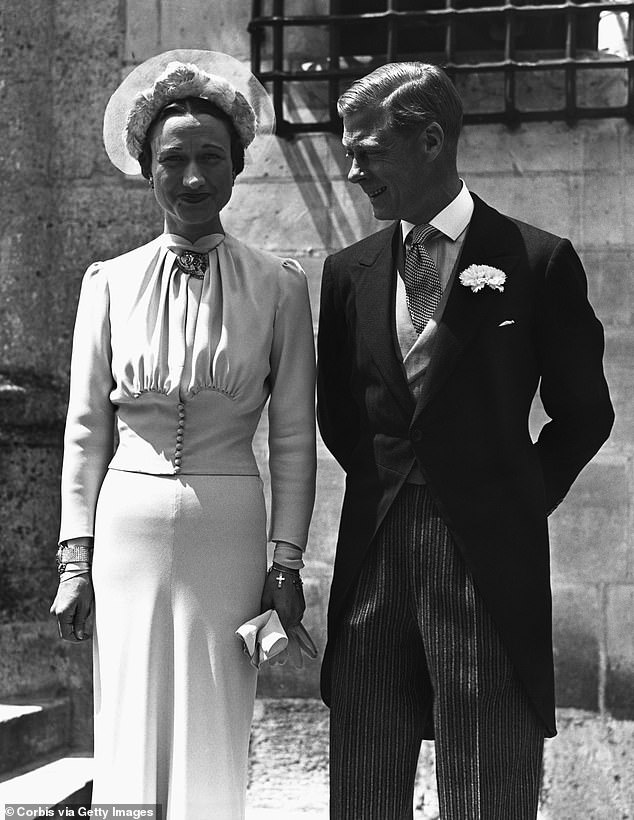
Wallis Simpson and Edward married in 1937 in France after he abdicated. He was given the title Duke of Windsor and they emigrated to the Bahamas
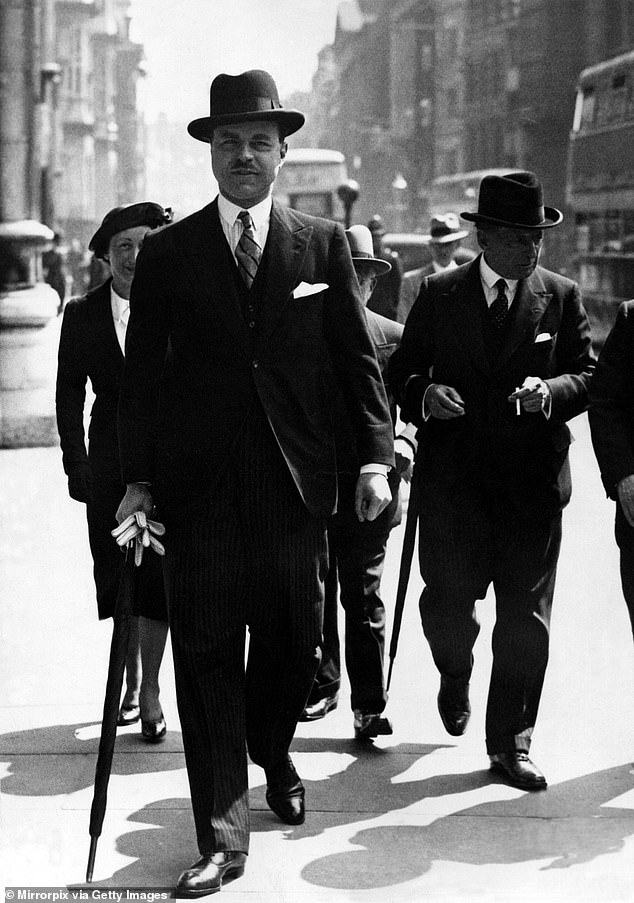
An undated photograph of Mr Simpson dressed sharply in a pin-stripe suit and hat
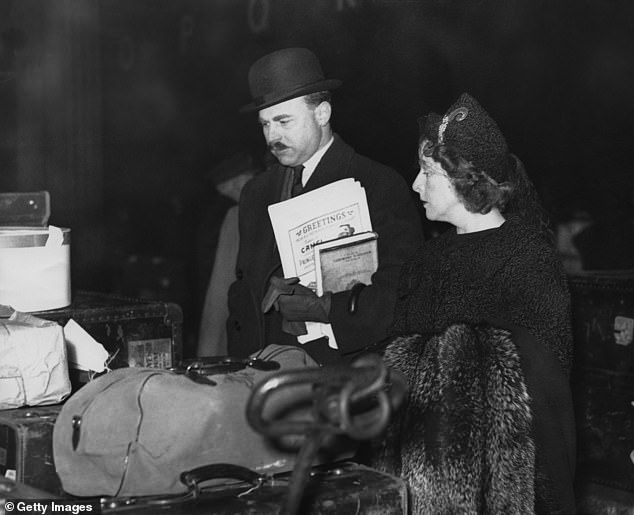
After the war began, the Simpsons evacuated their son to America for safety. Tragically, in 1940 Mary was diagnosed with breast cancer. She told her sister that she was ‘heartbroken’ on Ernest’s account but would try to be brave for him
It is hard to believe that if Wallis had stayed with him, she would have pursued her flirtation with fascism which has tarnished her reputation.
Staunchly patriotic, at the end of the First World War he abandoned his studies at Harvard to join the Coldstream Guards. Of Jewish descent, he had no time for Hitler, unlike his ex-wife. When the Second World War began, he was determined to do his bit and so he was sent on a secret mission to India.
Knowing the real Ernest Simpson, instead of just seeing him as the king’s cuckold makes an observer wonder whether Wallis made a mistake in leaving him.
It seems that at times she regretted it. She always stayed in touch with her ex and never spoke negatively about him. She described him as ‘a strong and noble character’ who had been a wonderful friend to her.
However, the allure of those sparkling Cartier jewels and the promise of a place in history were just too much for a woman who always wanted more. As Ernest, who perhaps knew her better than anyone, once wrote to her: ‘Could you possibly have settled down to the old life and forgotten the fairyland through which you had passed? My child, I do not think so.’
Rachel Trethewey’s latest book Muv: The Story of the Mitford Girls’ Mother is published by The History Press on 18th September 2025.












